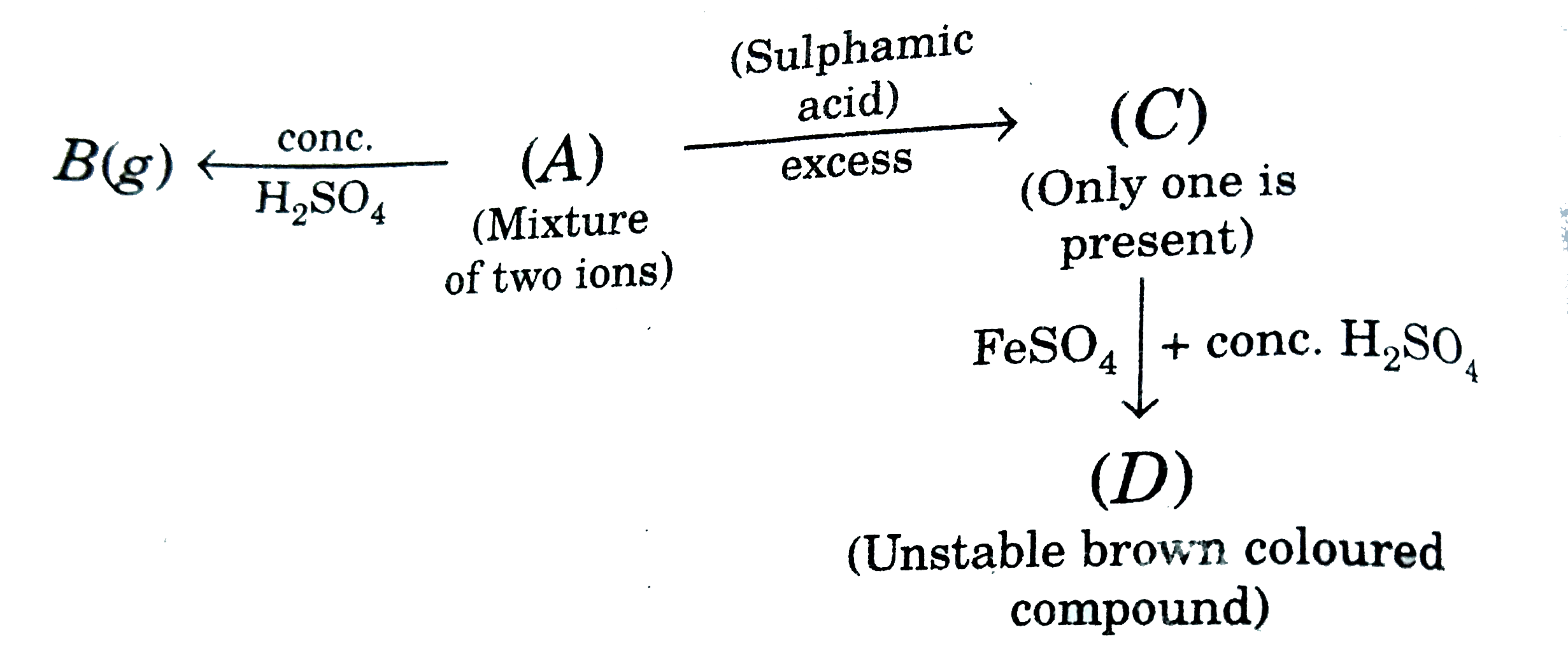Which of the following species has used both axial set of d-orbitals in hybridisation of central atom ?
none of these
The correct Answer is:C
To determine which species uses both axial sets of d-orbitals in the hybridization of the central atom, we will analyze the given options step by step.
Step 1: Understand Axial d-Orbitals
Axial d-orbitals refer to the d-orbitals that are aligned along the axes of a coordinate system. In the context of hybridization, these orbitals can participate in forming hybrid orbitals when the central atom has a coordination number that allows for their involvement.
Step 2: Analyze Each Option
We will analyze each of the given options to determine their hybridization and whether they utilize both axial d-orbitals.
Option A: PBr4+
1. Structure: The molecular geometry of PBr4+ is tetrahedral.
2. Hybridization: The hybridization is sp³.
3. d-Orbital Involvement: Since it is sp³ hybridization, no d-orbitals are involved.
Conclusion: PBr4+ does not use axial d-orbitals.
Option B: PCl4-
1. Structure: The molecular geometry of PCl4- is seesaw (or distorted tetrahedral).
2. Hybridization: The hybridization is sp³d.
3. d-Orbital Involvement: Only one d-orbital is involved in this hybridization.
Conclusion: PCl4- does not use both axial d-orbitals.
Option C: ICl4-
1. Structure: The molecular geometry of ICl4- is square planar.
2. Hybridization: The hybridization is sp³d².
3. d-Orbital Involvement: In sp³d² hybridization, both axial d-orbitals are used.
Conclusion: ICl4- uses both axial d-orbitals in the hybridization of the central atom (iodine).
Step 3: Final Answer
Based on the analysis, the species that uses both axial sets of d-orbitals in the hybridization of the central atom is ICl4-.
---
Axial d-orbitals refer to the d-orbitals that are aligned along the axes of a coordinate system. In the context of hybridization, these orbitals can participate in forming hybrid orbitals when the central atom has a coordination number that allows for their involvement.
We will analyze each of the given options to determine their hybridization and whether they utilize both axial d-orbitals.
1. Structure: The molecular geometry of PBr4+ is tetrahedral.
2. Hybridization: The hybridization is sp³.
3. d-Orbital Involvement: Since it is sp³ hybridization, no d-orbitals are involved.
1. Structure: The molecular geometry of PCl4- is seesaw (or distorted tetrahedral).
2. Hybridization: The hybridization is sp³d.
3. d-Orbital Involvement: Only one d-orbital is involved in this hybridization.
1. Structure: The molecular geometry of ICl4- is square planar.
2. Hybridization: The hybridization is sp³d².
3. d-Orbital Involvement: In sp³d² hybridization, both axial d-orbitals are used.
Based on the analysis, the species that uses both axial sets of d-orbitals in the hybridization of the central atom is ICl4-.
Topper's Solved these Questions
- CHEMICAL BONDING (BASIC)BOOK - VK JAISWALCHAPTER - CHEMICAL BONDING (BASIC)EXERCISE - Level 3 (Passive 1)
6 Videos
- CHEMICAL BONDING (BASIC)BOOK - VK JAISWALCHAPTER - CHEMICAL BONDING (BASIC)EXERCISE - Level 3 (Passive 2)
6 Videos
- CHEMICAL BONDING (ADVANCED)BOOK - VK JAISWALCHAPTER - CHEMICAL BONDING (ADVANCED)EXERCISE - SUBJECTIVE PROBLEMS
72 Videos
- CO-ORDINATION COMPOUNDSBOOK - VK JAISWALCHAPTER - CO-ORDINATION COMPOUNDSEXERCISE - ASSERTION-REASON TYPE QUESTIONS
26 Videos
Similar Questions
Knowledge Check

What is the hybridisation of central atom of (D)?Ad2sp3Bsp3d2Csp3dDsp3Which of the following species has sp3 hybridisation.
A.CH3B.CF3CClO2Dnone of theseWhich of the following complex species does not involve inner orbital hybridisation ?
A[CoF6]3−B[Co(NH3)6]3+C[Fe(CN6)]3−D[Cr(NH3)6]3+
Which of the following has sp3 hybridisation of central atom ?
View SolutionHybridisation is the mixing of atomic orbital of comparable energy and the number of hybrid orbitals formed is equal to the number of pure atomic orbitals mixed up and hybrid are occupied by σ-bond pair and lone pair.
Which of the following geometry is most likely to not form from sp3d hybridisation of the central atom.
View SolutionWhich of the following set of species are non-planar as well as dz2 orbital used in hybridisation ?
View SolutionWhich of the following set of species are non-planar as well as dz2 orbital used in hybridisation ?
View SolutionWhich of the following sp3 hybridisation central atom ?
View Solution
